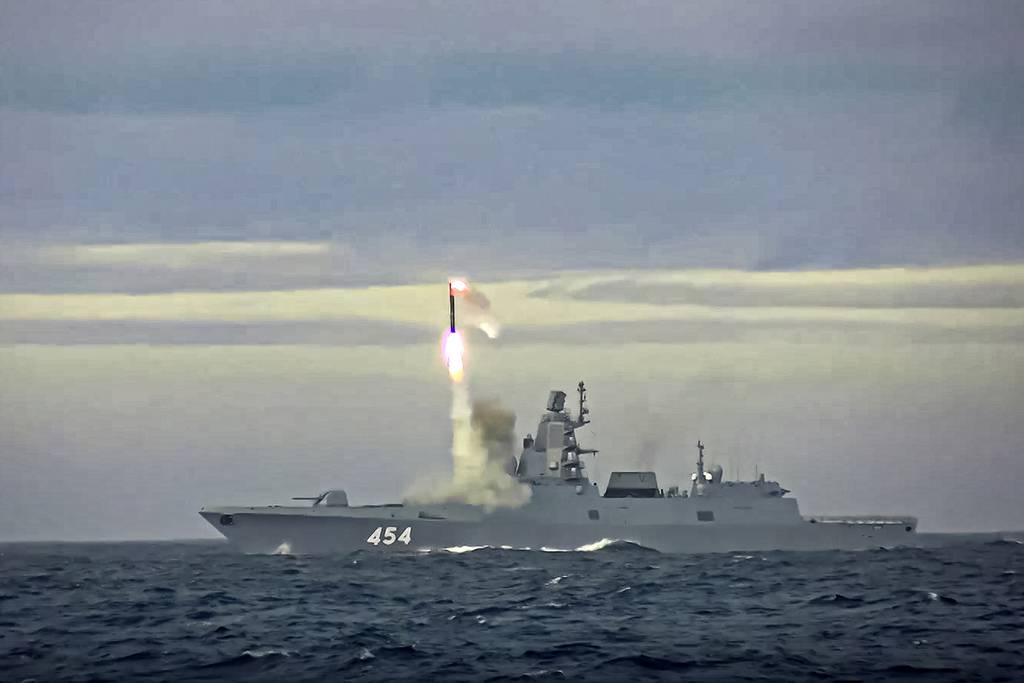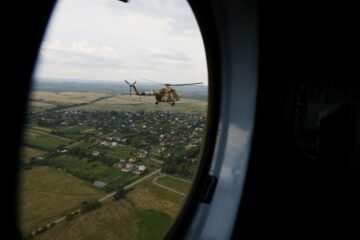
WASHINGTON — Congress is pushing the Missile Defense Agency to field interceptors that can defeat hypersonic weapons more quickly than planned in the recently passed fiscal 2024 National Defense Authorization Act.
While the most recent projections from the agency for delivering a Glide Phase Interceptor, or GPI — capable of intercepting a hypersonic missile in its glide phase of flight — have been rough estimates around the early 2030s, Congress is mandating the program reach initial operational capability by the end of 2029.
This means MDA must not only prove the capability can counter hypersonic weapons in tests, but deliver and field “not fewer than 12″ GPIs by the deadline, according to the NDAA.
Moreover, the legislation notes the program is required to reach full operational capability by the end of 2032, and adds that the Pentagon must field “not fewer than 24″ GPIs by the end of 2040.
Establishing full operational capability also would include the ability for the GPI “to be operated collaboratively with space-based or terrestrial sensors that the Department of Defense expects to be deployed before the end of 2032,” according to the legislation.
To boost the effort, Congress authorized $225 million in additional funding beyond the agency’s FY24 ask of $209 million for hypersonic defense development efforts.
Lawmakers also authorized MDA’s director to enter a cooperative development agreement “with one or more international partners” to develop the capability.
MDA and Japan have been in talks regarding a co-development arrangement for GPI, much like the program to develop and procure the Navy’s SM-3 Block IIA program.
Raytheon Technologies — an RTX company — and Northrop Grumman are each developing hypersonic weapons interceptors in an MDA-led competition. Each company has received roughly $61 million to date.
Developing interceptors capable of defeating a hypersonic missile that can travel more than five times the speed of sound and can maneuver in the glide phase of flight is expected to be challenging.
The interceptors will be designed to fit into the U.S. Navy’s current Aegis Ballistic Missile Defense destroyers. It will be fired from its standard vertical launching system and integrated with the modified Baseline 9 Aegis Weapon System that detects, tracks, controls and engages hypersonic threats.
There is pressure on the United States to develop an interceptor to counter hypersonic weapons as its adversaries like Russia and China sprint ahead.
“Russia and China are making a lot of headway; they might be slightly ahead of us. But we’re spending $4 billion a year to catch up in offensive hypersonics,” Mark Montgomery, a defense expert at the Foundation for Defense of Democracies, told Defense News in a recent interview.
“We would have no defense against that,” he said, and “you would expect that we would be taking risks, pushing fast to get hypersonic defense done, but we’re only spending about $250 million … a year on hypersonic defense, so less than 10% of hypersonic offense.”
Jen Judson is an award-winning journalist covering land warfare for Defense News. She has also worked for Politico and Inside Defense. She holds a Master of Science degree in journalism from Boston University and a Bachelor of Arts degree from Kenyon College.
- SEO Powered Content & PR Distribution. Get Amplified Today.
- PlatoData.Network Vertical Generative Ai. Empower Yourself. Access Here.
- PlatoAiStream. Web3 Intelligence. Knowledge Amplified. Access Here.
- PlatoESG. Carbon, CleanTech, Energy, Environment, Solar, Waste Management. Access Here.
- PlatoHealth. Biotech and Clinical Trials Intelligence. Access Here.
- Source: https://www.defensenews.com/pentagon/2023/12/18/congress-demands-quicker-fielding-of-hypersonic-weapons-interceptor/
- :has
- :is
- :not
- $UP
- 2024
- 70
- 8
- 9
- a
- ability
- About
- According
- Act
- Additional
- Adds
- against
- agency
- Agreement
- ahead
- also
- an
- and
- ARE
- around
- arrangement
- Arts
- AS
- ask
- At
- authorization
- authorized
- award-winning
- Baseline
- BE
- been
- before
- Beyond
- Billion
- Block
- boost
- boston
- Boston University
- but
- by
- CAN
- capability
- capable
- Catch
- challenging
- China
- College
- company
- competition
- Congress
- controls
- cooperative
- Counter
- covering
- Current
- Date
- deadline
- defeating
- Defense
- Degree
- deliver
- delivering
- demands
- Department
- department of defense
- deployed
- designed
- develop
- developing
- Development
- Director
- done
- each
- Early
- effort
- efforts
- end
- engages
- Enter
- estimates
- expect
- expected
- expects
- expert
- FAST
- fewer
- field
- fired
- Fiscal
- fit
- five
- flight
- For
- Foundation
- from
- full
- funding
- get
- Have
- he
- holds
- HTTPS
- images
- in
- include
- initial
- inside
- integrated
- International
- Interview
- into
- IT
- ITS
- Japan
- journalism
- journalist
- jpg
- Land
- launching
- Legislation
- less
- like
- Lot
- Making
- mandating
- mark
- master
- means
- might
- million
- modified
- more
- most
- much
- must
- National
- news
- no
- Notes
- of
- offensive
- on
- ONE
- only
- operated
- operational
- or
- passed
- pentagon
- phase
- planned
- plato
- Plato Data Intelligence
- PlatoData
- pressure
- procure
- Program
- projections
- Prove
- Pushing
- quicker
- quickly
- reach
- received
- recent
- recently
- regarding
- required
- risks
- roughly
- rtx
- Russia
- s
- Said
- Science
- sensors
- she
- So
- Sound
- space-based
- speed
- Spending
- Sprint
- standard
- States
- system
- taking
- Talks
- Technologies
- terrestrial
- tests
- than
- that
- The
- they
- threats
- times
- to
- told
- tracks
- travel
- u.s.
- United
- United States
- university
- us
- vertical
- we
- Weapons
- will
- with
- worked
- would
- year
- zephyrnet











